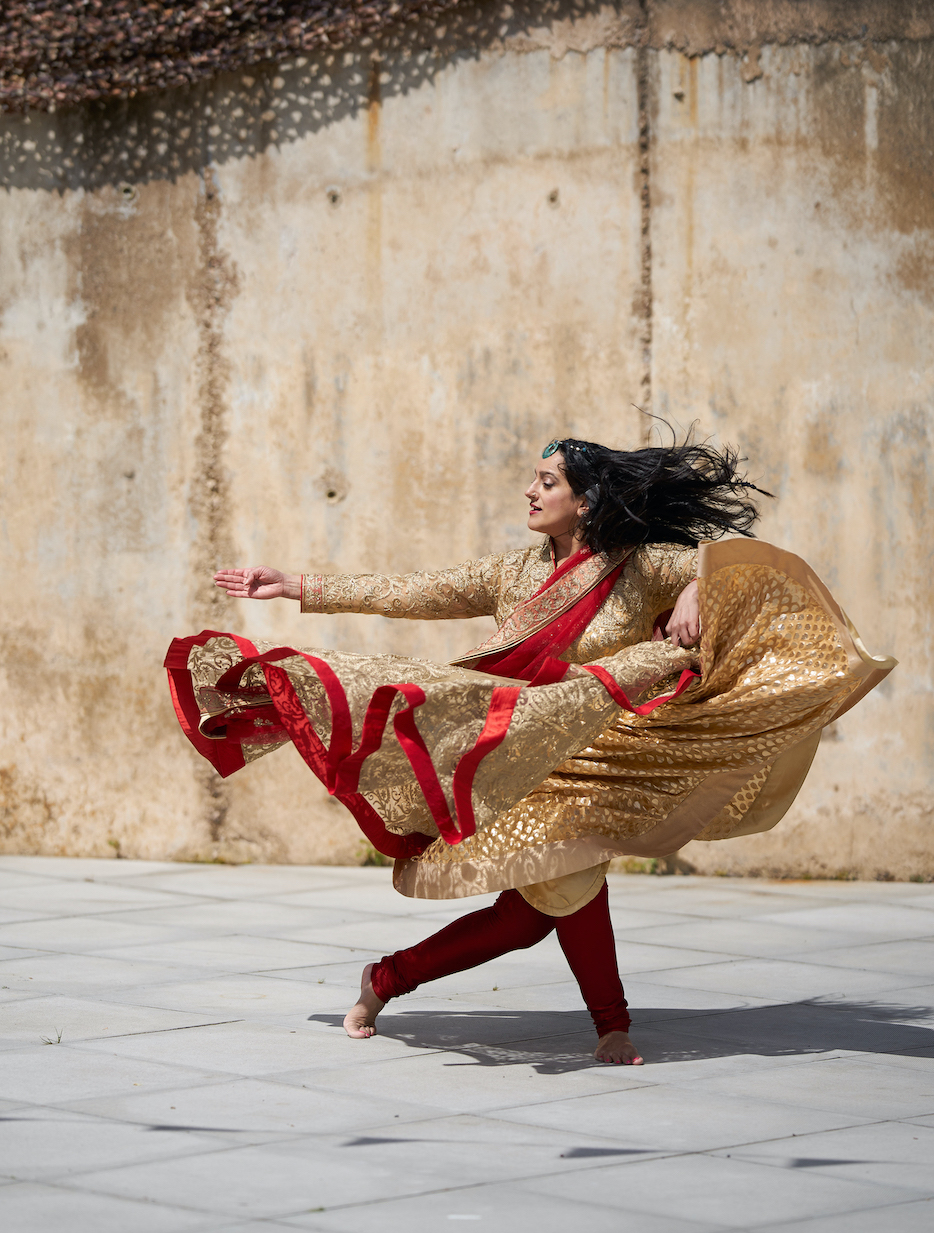NEWS
Sonia Sabri: Embracing Light and Darkness through Kathak
Writer of Reclamation Magazine, Aishwarya Viswamitra tells the biography of Sonia Sabri's journey into Kathak Dance.
Share

Sonia Sabri: Embracing Light and Darkness Through Kathak Sonia Sabri’s journey into Kathak dance started with a twist of fate. She was all set to learn Bharatnatyam, a style of dance from South India when destiny had other plans. By a stroke of luck (or perhaps fate), Sonia ended up in a Kathak class at the Midlands Art Centre in Birmingham.
Picture a shy six-year-old Sonia, stepping into that class, nudged by her father’s dreams of seeing her shine in the arts. Despite feeling unsure and lacking confidence at first, Sonia soon found herself drawn into Kathak’s intricate movements and captivating storytelling. Under the guidance of her teacher, Sonia’s love for Kathak bloomed. She admired her teacher’s unwavering dedication to the art form, seeing how Kathak was more than just dance — it was a way of life. As Sonia’s skills grew, so did her passion for Kathak, leading her to dive headfirst into intense training sessions and performances. Despite facing doubts about pursuing a conventional career path, Sonia remained committed to Kathak, finding deep fulfilment in every performance.
Through Kathak, Sonia not only discovered her artistic calling but also forged a profound connection to her cultural roots, setting her on a lifelong journey of self-discovery through dance. “It makes us appreciate the smaller things that get missed in life for everyday life… Kathak is not just a dance form or an art form or a technique; it is a way to decipher the world around us.”
For Sonia, Kathak transcends mere dance — it’s a tool for understanding the complexities of the world and shaping her identity. In the diaspora, where questions of cultural belonging loom large, Kathak provides grounding and solace amid life’s chaos. Through its movements and rhythms, Kathak fosters an appreciation for culture, faith, and spirituality, grounding Sonia in her environment, whether in her homeland or adopted country. “It’s connecting to oneself and it’s connecting to our homeland, wherever that may be, and hopefully share something which leaves some kind of a life lesson.”
Moreover, Kathak serves as a medium for self-expression, allowing Sonia to communicate emotions and ideas beyond words. In a world where language can falter, Kathak becomes Sonia’s voice, speaking a universal language of art and emotion. Beyond its beauty, Kathak’s traditional narratives provide Sonia with a tangible link to her cultural heritage, offering glimpses into Indian life and tradition. Each step, each gesture, becomes a tribute to her ancestors, weaving together threads of tradition and modernity to craft a unique identity. “I feel that Kathak and any classical dance form or music really support the appreciation of culture, faith, spirituality, and make us observant of our environment.”
However, finding her place in the Kathak community was no easy feat. In England, where the Kathak community is small, Sonia faced the challenge of connecting with like-minded individuals. Yet, with determination and talent, Sonia quickly gained recognition among her peers and mentors. With social media bridging distances, Sonia formed bonds with Kathak artists worldwide, finding camaraderie and support within the community. The Kathak community may be small, but connections run deep. As Sonia continues her artistic journey, she remains hopeful that the Kathak community will thrive, welcoming newcomers and fostering unity among its members.
Roshni As I watched Sonia Sabri’s dance performance, “Roshni,” I found myself swept away on a captivating journey through light and darkness, hope and despair. The performance unfolded like a spellbinding tapestry, weaving together intricate movements and poignant storytelling that resonated deeply with the human experience. The performance opened with “The Call,” which blended rhythms, melodies, and movements seamlessly, somehow bridging cultural divides and art forms. This stirred something within me, and it was clear that the opening piece called to an inner power so easy to forget, but so easy to connect to through art.
As the narrative of “The Light” unfolded, Sonia transported her audience to a mystical forest garden where the guardian fought valiantly to protect her realm from exploitation. Sonia’s graceful movements and expressive gestures conveyed the delicate balance between preservation and exploitation, and the indomitable spirit that perseveres in the face of adversity. Amidst the darkness that loomed over the performance, I found myself empathising deeply with the forest guardian as she confronted the forces threatening to engulf her world. I am not a forest guardian and I am not fighting evil forces, but often young adulthood can feel that way. A journey that I have been on this year to be better at looking for the joy within, and in the case of the forest guardian the joy shone as a glimmer of hope — a testament to the resilience of the human spirit and the possibility of redemption.
The final piece brought the performance home reminding us of the cyclical nature of existence and me of the purpose and significance of my journey (particularly my recent move to London). Throughout the performance, Sonia’s creative vision unfolded with meticulous attention to detail, from the vibrant costumes to the abstract backdrop symbolising the eternal struggle between light and darkness. Each element contributed to the thematic resonance of the piece, leaving me awestruck and deeply inspired. As “Roshni” drew to a close, I felt inspired and could not quite believe that the performance was already done. It was an experience that left an indelible mark on my heart, and honestly, couldn’t have come at a better time in my own journey.
What’s next? As for what’s next for Sonia Sabri, the journey of creativity and exploration continues. The Roshni tour continues at the Sensasian Festival, New Vic Theatre on Wednesday 10 July and at the Curve, Leicester on Saturday 13 July. Written by Aishwarya Viswamitra Published by Reclamation Magazine, 5 May 2024